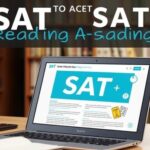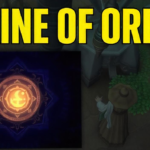As we know the assessment in the area of early childhood education has never been so important and significant as it is today. Teachers and caregivers are expected to assess young children’s development in different domains. This is where “Teaching Strategies GOLD” comes in handy; this is an existing form of an assessment tool that has been developed to help the early childhood educators to observe, document and evaluate children’s learning and development in several domains.
In this article, the author is going to describe the key functions of Teaching Strategies GOLD, the advantages of using it for educators and students, as well as the tips for successful application of the system in the classroom. By the end of this article you will understand more about this tool and how it improves learning experiences for young children.
What Is Teaching Strategies GOLD?
Teaching Strategies GOLD is an accurate, direct-observation formative assessment process developed for children from birth to third grade. This tool was developed by Teaching Strategies, LLC and is based on major early learning standards such as those provided by state frameworks and the Common Core. In contrast to conventional assessment approaches that might provide a single picture of a child’s skills, GOLD enables instructors to track and record a child’s progress in real-time.
The system covers multiple areas of child development and learning, including:
- Social-emotional development
- Physical development
- Language development
- Cognitive development
- Literacy
- Mathematics
- Science and technology
- Social studies
- The arts
- English language acquisition
GOLD stands out because it focuses on the whole child, providing educators with a well-rounded picture of their developmental milestones. The platform is user-friendly and includes both online and offline functionalities, enabling educators to assess children in various learning environments.
Key Components of Teaching Strategies GOLD
Teaching Strategies GOLD is structured around a series of key components that make it a powerful tool for educators:
Objectives for Development and Learning
The foundation of GOLD is based on research-driven objectives that guide educators in assessing children. These objectives align with widely accepted standards, ensuring the assessments remain relevant to educational benchmarks. The system contains 38 objectives organized into different areas of learning and development.
Observation and Documentation
The assessment process in GOLD is largely observational. Teachers observe children during regular classroom activities and document these observations using various methods—notes, photos, videos, and samples of children’s work. This makes the assessment process natural and non-intrusive for the children.
Ongoing Assessment
Unlike periodic testing, Teaching Strategies GOLD promotes continuous assessment. This means that teachers can track progress over time, adjusting their instruction as needed based on children’s individual development.
Developmental Continuum
GOLD uses a developmental continuum that provides a roadmap for teachers, allowing them to assess where a child falls within a specific range of developmental milestones. This continuum is built around research on child development and helps educators identify children’s strengths and areas for growth.
Family Engagement
Another essential component of GOLD is its emphasis on family involvement. The system offers tools that help educators communicate children’s progress to families in a meaningful way, fostering a collaborative relationship between teachers and parents. This partnership enhances the learning environment and ensures that children receive support both at school and at home.
Benefits of Using Teaching Strategies GOLD
1. Comprehensive Child Development Monitoring
One of the most significant advantages of using Teaching Strategies GOLD is its ability to offer a holistic view of each child’s development. Since the tool spans various developmental domains, it helps educators identify not just academic strengths and weaknesses but also social-emotional and physical growth. This all-encompassing approach supports well-rounded development and allows educators to tailor their instruction accordingly.
2. Individualized Learning
Every child learns at their own pace, and GOLD recognizes this by allowing for individualized learning experiences. Teachers can use the data gathered through observations to create personalized lesson plans, activities, and learning goals. By focusing on each child’s unique needs, educators can foster environments that nurture growth and success.
3. Enhanced Family Engagement
Teaching Strategies GOLD encourages strong family partnerships. Through regular communication and sharing of assessment results, families become active participants in their child’s education. Parents can better understand their child’s developmental progress and collaborate with educators to support learning goals at home.
4. Alignment with Standards
For educators, ensuring that assessments align with state and national standards is crucial. Teaching Strategies GOLD is designed to meet various early childhood standards, making it easier for teachers to track children’s progress in relation to state benchmarks. This alignment simplifies reporting and provides administrators with a consistent measure of development across classrooms.
5. Real-Time Data and Reporting
The digital nature of GOLD enables educators to enter data in real-time, which results in up-to-date insights into each child’s development. The system also includes robust reporting tools, allowing teachers to generate detailed reports that can be used to inform instruction, track progress, and share updates with families or school administrators.
Best Practices for Implementing Teaching Strategies GOLD
1. These are: Start with Professional Development
In order to fully benefit from Teaching Strategies GOLD, one has to be trained to use it appropriately. This will help them in fully grasping how to use the systems observation techniques, documentation tools and data analysis. Continuing professional learning also enables the teachers to acquire the current knowledge and evidence based practice in early childhood education.
2. Establish GOLD as a part of the daily practice
Because GOLD is based on the observation of naturalistic environments, the assessment activities should be incorporated into regular practice. These are ideal time for observations to be made whether it is during free play, story time or group time. The challenge here is for the teachers to observe without interfering with the normal running of the day.
3. Perform Multiple Observations
Observations do not only include written records. Teachers should use a variety of methods like photographs, videos and children’s work samples so as to give a comprehensive account of the child’s development. These various forms of documentation can be entered into the GOLD system and used to support assessment results.
4. Collaborate with Families
Families need to be updated on the development of the child periodically. Organize parents’ teacher meetings, provide parents with reports on the child’s progress, and remind them to ask questions. Teaching Strategies GOLD offers several ways of presenting the assessment data that will be comprehensible and valuable for families.
5. Metacognition: Use of Data in Teaching and Learning
After entering observations and assessments into the system, it is important for teachers to ponder about the data. Is there any development pattern in a child? Where should we focus more? The findings of this reflection should be used in lesson planning and teaching so that every child is given attention.
Challenges and Solutions for Using Teaching Strategies GOLD
While Teaching Strategies GOLD offers numerous advantages, there are potential challenges that educators may face:
1. Time-Consuming Documentation
Observing and documenting each child’s development can be time-consuming. Teachers often struggle to find the time to input data into the system amidst their other responsibilities. To overcome this, schools can allocate dedicated time for teachers to complete assessments, or administrators can offer support in managing workload expectations.
2. Maintaining Objectivity
Since GOLD is based on observation, maintaining objectivity is crucial. Teachers must avoid letting personal biases or expectations influence their observations. To mitigate this, schools can provide training on observational objectivity and encourage collaboration among teaching teams to ensure assessments are fair and balanced.
3. Engaging Families in the Assessment Process
Some parents may feel disconnected from the assessment process, especially if they are unfamiliar with the tools or terminology. Schools should prioritize family engagement by offering workshops or sending informative resources that explain how GOLD works and the role families play in supporting their child’s learning journey.
Teaching Strategies GOLD and Technology Integration
In today’s digital world, integrating technology into education is more important than ever. Teaching Strategies GOLD offers a digital platform that makes assessment more accessible and manageable for teachers. The online portal allows educators to store observations, generate reports, and share updates with families. Additionally, the system can be accessed via tablets and smartphones, enabling teachers to input data on-the-go.
Furthermore, GOLD’s digital interface offers features such as child-level reports, class-level reports, and alignment with state standards, making it easier to track progress over time. The integration of technology not only streamlines the assessment process but also provides a more organized and efficient way for educators to monitor and support children’s development.
Conclusion: The Value of Teaching Strategies GOLD in Early Childhood Education
Teaching Strategies GOLD has been found to be very useful in early childhood learning. It is useful to educators because of its research-based goals, broad developmental focus, and ongoing evaluation. As a result of enabling teachers to monitor children’s progress in multiple domains, GOLD makes it possible for instruction to be made relevant and purposeful.
Teaching Strategies GOLD is the tool that educators need to ensure that they deliver the best quality early childhood education to children. With schools and early childhood programs emphasizing on the achievement of young learners, Teaching Strategies GOLD will be a critical tool in early childhood assessment and teaching.
By paying attention to best practices and challenges, educators are able to maximize the use of Teaching Strategies GOLD to create a brighter future for the children they teach.









